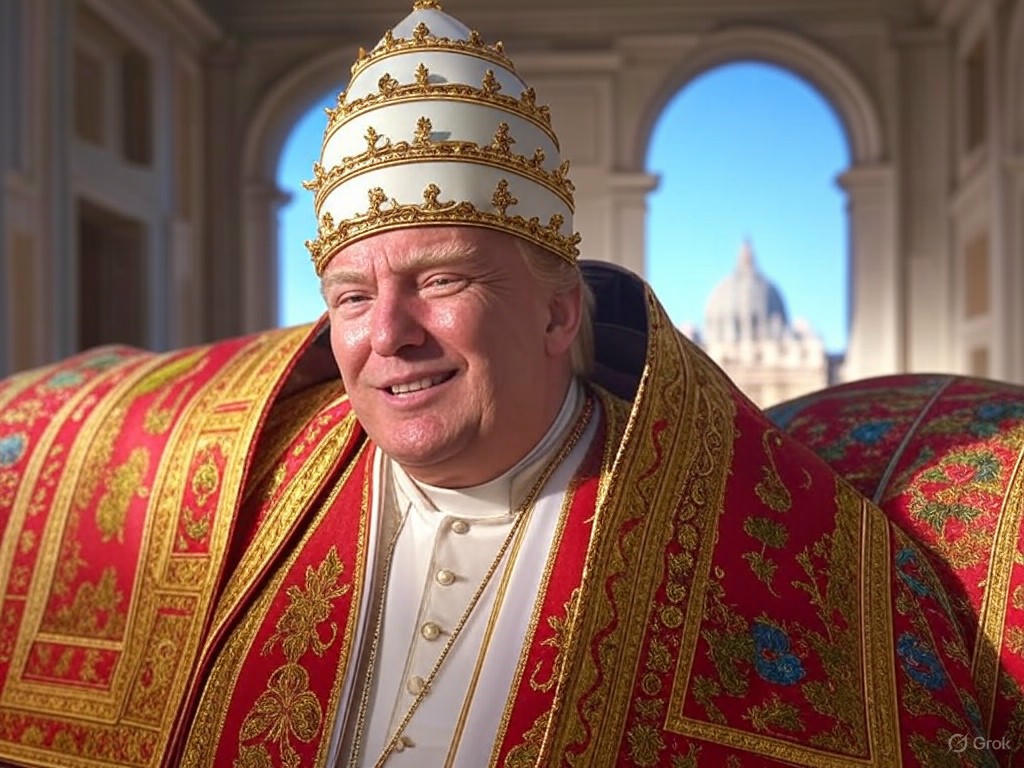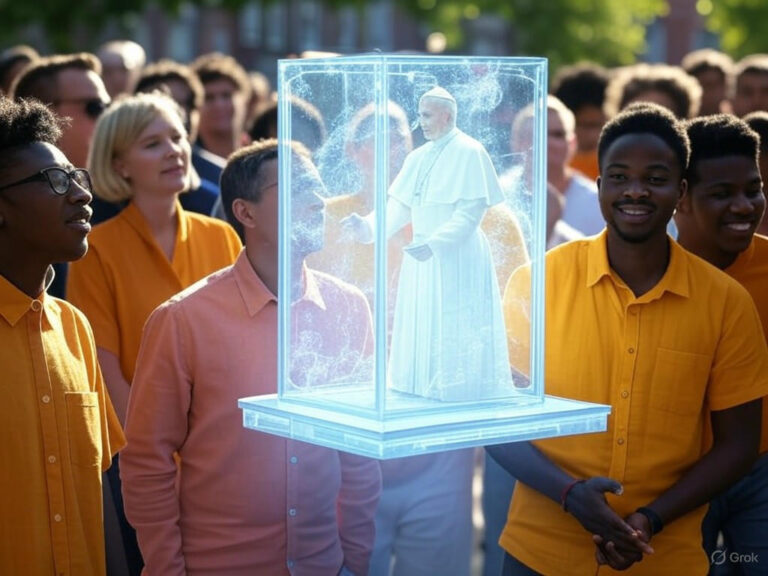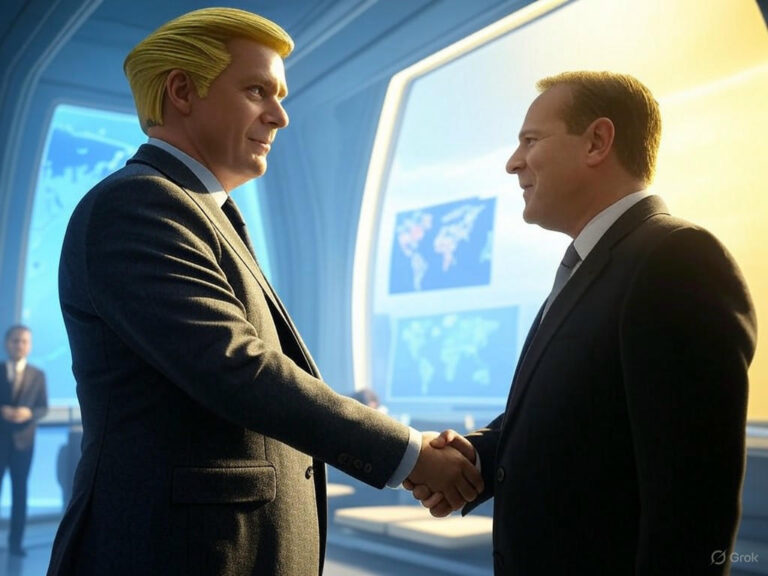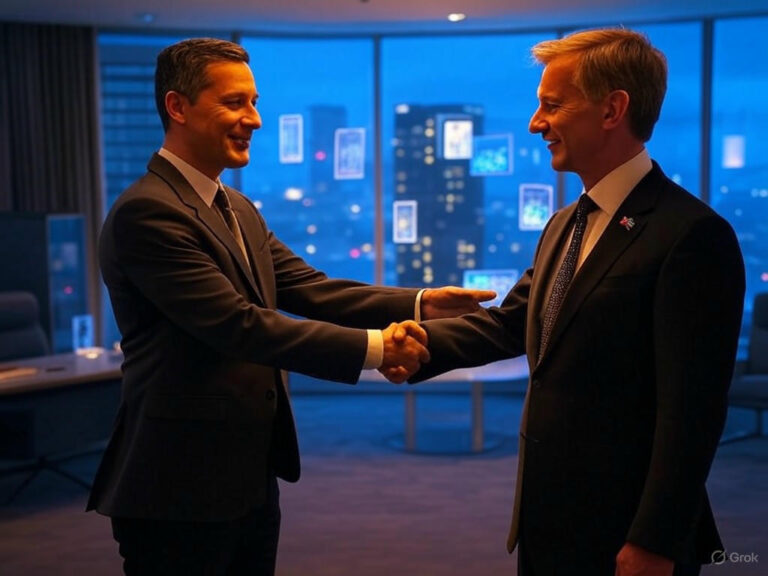
Vance Defends Trump’s Controversial AI Pope Image
The Outrage Over Trump’s AI Pope Image During Vatican Mourning
Imagine scrolling through social media and stumbling upon an AI-generated image that feels wildly out of touch— that’s exactly what happened when President Donald Trump shared a picture of himself dressed as the Pope on Truth Social. This Trump AI Pope image, posted just 11 days after Pope Francis’s passing on April 21, 2025, sparked immediate backlash from religious communities and beyond. It’s a stark reminder of how quickly digital humor can cross into disrespect, especially during a nine-day mourning period when cardinals are still holding daily Masses and gearing up for the conclave.
The White House amplified the issue by reposting it on their official X account, turning what might have been a fleeting moment into a global talking point. Have you ever wondered how one post can ignite such fierce debate? In this case, it highlighted the delicate balance between satire and sensitivity in our increasingly digital world.
Breaking Down the Trump AI Pope Image Details
The image itself is striking: Trump, at 78, appears in full papal regalia, complete with a white cassock, bishop’s hat, and a large cross necklace, all crafted by AI. He sits with a serious expression, raising a finger as if delivering a sermon— a clever but contentious mimicry that left many questioning its intent. Trump shared it without a caption, right after he’d jokingly floated the idea of being Pope Francis’s successor and attended the funeral just days prior.
What’s fascinating here is how AI tools made this possible so effortlessly. This Trump AI Pope image isn’t just a quirky edit; it’s a product of advanced technology that’s reshaping how we create and consume content. If you’re into tech, you might see the creative potential, but for others, it felt like a direct slight during a time of grief.
Vice President Vance’s Defense of the Trump AI Pope Image
As the criticism poured in, Vice President Vance quickly stepped up to bat for Trump, calling it all in good fun. He argued that people should be “fine with telling jokes,” framing the Trump AI Pope image as harmless humor rather than an attack on Catholic traditions. It’s a classic defense in politics— turning controversy into a laugh—but it didn’t sit well with everyone.
This response marks the administration’s attempt to lighten the mood, suggesting that in their view, satire has its place even in sensitive times. Yet, it raises an important question: where do we draw the line between a joke and outright offense, especially when dealing with revered figures like Pope Francis?
Global Backlash to the Trump AI Pope Image
The reaction was swift and widespread, with Catholics, clergy, and even non-religious folks voicing their disapproval. This Trump AI Pope image went viral, drawing comments from all corners, including a popular X account that labeled it “full-on lunacy.” People described it as disrespectful, particularly given the ongoing mourning for Pope Francis, a leader admired for his compassion and ideals.
Critics online didn’t hold back, calling Trump a “man-child” for the timing. It’s moments like these that make you pause and think: how does one ill-timed post affect public perception on a massive scale?
Vatican and Media Responses to the Trump AI Pope Image Fallout
The controversy even made it into Vatican discussions during the conclave briefing, with Italian and Spanish news outlets leading the charge in condemnation. They highlighted how the image clashed with the deep respect many Italians have for the Pope, regardless of faith. This Trump AI Pope image didn’t just ruffle feathers; it sparked international debates about cultural sensitivity.
In a world where social media amplifies everything, it’s a wake-up call for leaders to consider the broader impact. Could better timing have changed the narrative?
AI-Generated Images in Political Contexts
The Trump AI Pope image is a prime example of how AI is shaking up politics, where once-static photos can now be transformed in seconds. Recent changes, like OpenAI’s updates to ChatGPT in March 2025, have made it easier to generate images of public figures, raising both excitement and red flags. This shift is fueling conversations about the ethical use of such tools in sensitive areas.
While AI offers endless possibilities for creativity, it’s also opening doors to potential misuse. Think about it: what if every political jest could go viral and offend millions?
Shifts in AI Content Policies and the Trump AI Pope Image Debate
OpenAI’s relaxed policies now allow depictions of figures like Trump, but they’ve added opt-out options to give people control. Still, the Trump AI Pope image controversy shows the risks when safeguards fall short. It’s a balancing act—empowering users without encouraging harm.
As someone interested in tech ethics, you might appreciate how this incident is pushing for stronger guidelines. After all, one image can highlight flaws in the system we rely on daily.
Exploring Religious Respect Amid the Trump AI Pope Image Row
At its core, this controversy touches on how politics and religion intersect, especially with a figure as influential as Pope Francis. His death was a profound loss, not just for Catholics but for anyone who admired his message of unity. The Trump AI Pope image, shared during this vulnerable time, amplified questions about respecting sacred institutions.
The White House’s role in reposting it added another layer, making it seem like an official stance rather than a personal quip. This kind of move can erode trust, don’t you think?
How the White House Escalated the Trump AI Pope Image Issue
By sharing on official channels, the administration turned a private post into a public spectacle, drawing even more scrutiny. It’s a reminder that every action in politics has ripple effects, particularly when it involves global icons. In hindsight, could a different approach have mitigated the backlash?
Moving forward, leaders might benefit from pausing to consider cultural contexts before hitting “share.”
The Rise of AI-Generated Content in Politics
Trump’s AI Pope image isn’t an isolated event; it’s part of a growing trend where AI is used to craft provocative political content. As tools become more accessible, we’re seeing more cases of misinformation or divisive imagery popping up. This incident underscores the challenges platforms face in moderating such content effectively.
For instance, AI art has sparked debates among creators worried about job security and originality. It’s a double-edged sword: innovation on one side, ethical dilemmas on the other.
Backlash Against AI Art in the Wake of the Trump AI Pope Image
Similar to viral AI-generated styles that mimic artists, the Trump AI Pope image has fueled concerns about intellectual property and misuse. Artists are pushing back, arguing that unchecked AI could undermine human creativity. Yet, if used thoughtfully, AI could enhance storytelling in politics.
What’s your take— could guidelines help turn these tools into assets rather than liabilities?
Future Implications of the Trump AI Pope Image Controversy
As we head deeper into 2025’s political landscape, this episode serves as a cautionary tale for how AI might shape campaigns and public debates. With policies evolving quickly, figures like Trump could face more scrutiny over their digital choices. It’s an opportunity to redefine what’s acceptable in online communication.
One tip for navigating this: always verify sources and consider the context before sharing. That way, you contribute to a more respectful discourse.
Wrapping Up the Debate
In the end, the Trump AI Pope image has become a flashpoint for larger issues around humor, respect, and technology in politics. While Vance’s defense tried to paint it as light-hearted, the outcry from various communities shows how deeply it resonated. This isn’t just about one post; it’s about fostering empathy in a polarized world.
If you’re passionate about these topics, I’d love to hear your thoughts in the comments below. Share this article or check out our other pieces on AI ethics—let’s keep the conversation going.
References
The following sources were referenced in this article:
- Hindustan Times. “Pope Donald Trump AI Image Sparks Outrage, White House Issues Response.” Link
- Fox 32 Chicago. “Trump Shares AI-Generated Image of Himself as Pope.” Link
- Politico. “Vance Defends Trump’s AI Pope Image.” Link
- People. “Donald Trump Shares Fake AI Photo of Himself as the Pope.” Link
- GeekWire. “Seattle Engineer’s Ghibli-Style Image Goes Viral and Sparks Backlash Over AI Art.” Link
- Slate Star Codex. “My Id on Defensiveness.” Link
- TechCrunch. “OpenAI Peels Back ChatGPT’s Safeguards Around Image Creation.” Link
- Stephen Goforth. “Artificial Intelligence.” Link
Trump AI Pope image, AI controversy, Vance defense, Trump Truth Social, Pope Francis mourning, AI-generated political content, religious respect in politics, White House social media, digital humor backlash, Vatican response







